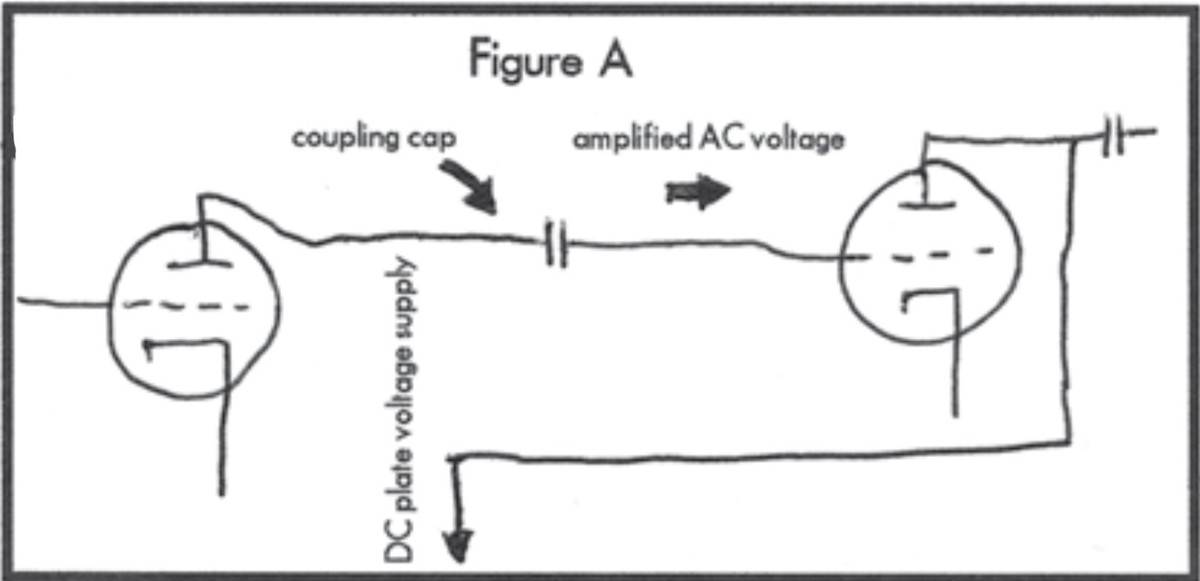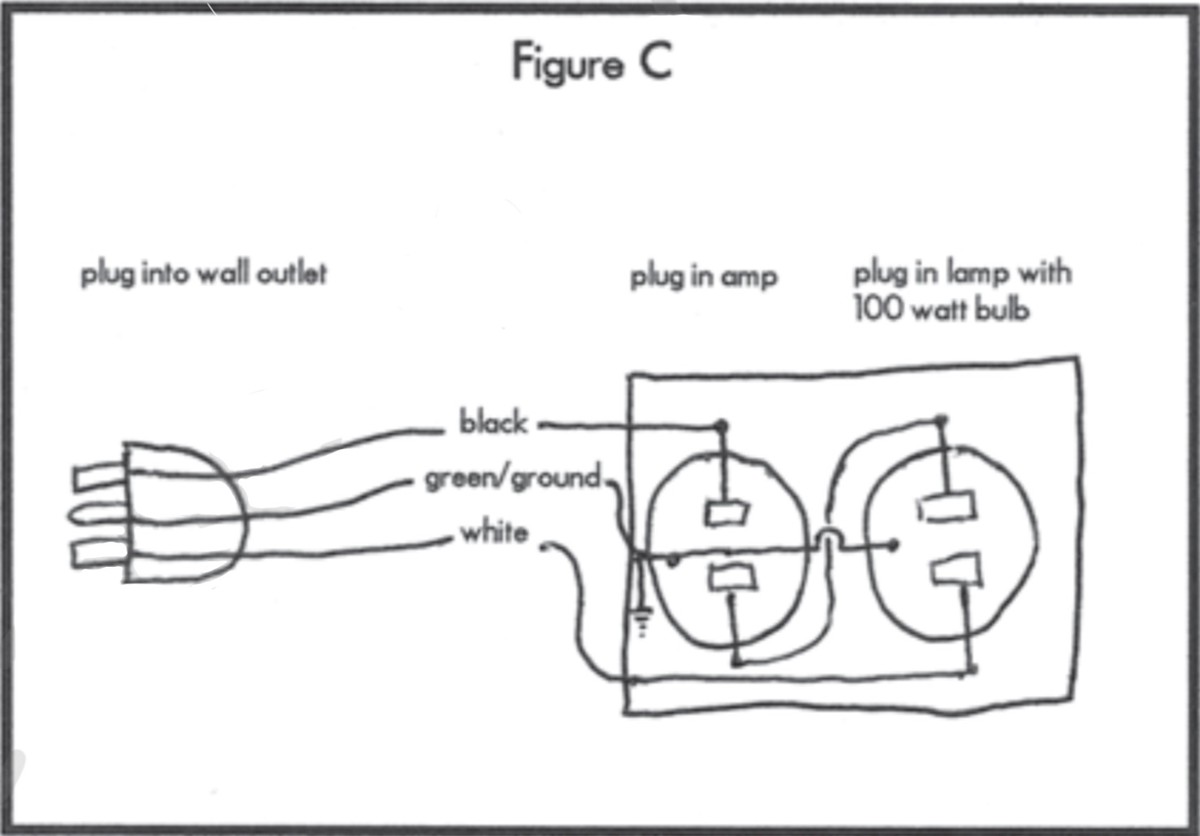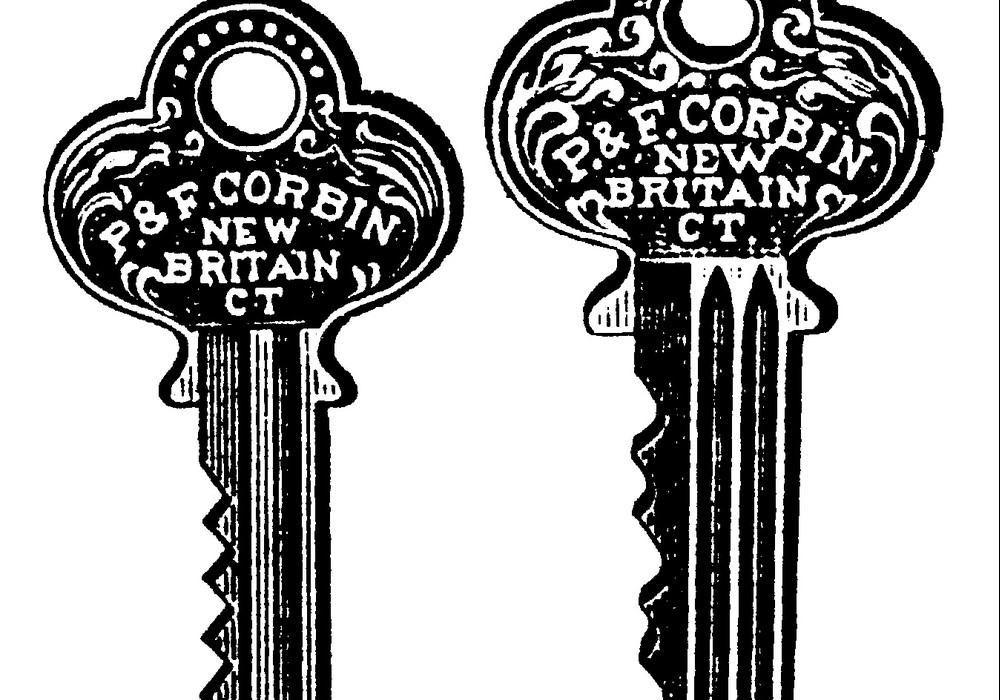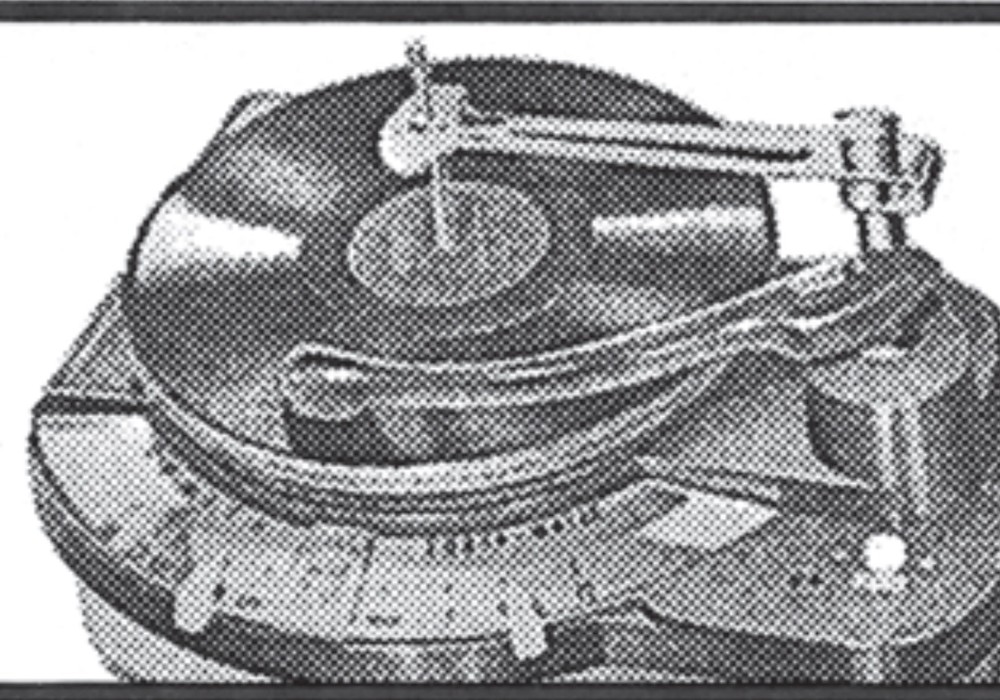Disclaimer #1: Do not open up your amplifier unless you know what you are doing! Tube amps work with lethal voltages that can remain in the amp even after it is unplugged. If you don't know how to discharge filter caps and how to safely work on your amp, don't try it. If you or your amp die, Larry and I are not responsible.
Disclaimer #2: I'm no expert. I've learned only from blowing shit up, shocking myself, and a little research on the side. Don't trust me. Do research for yourself. Start with a reprint of the RCA Receiving Tube Manual from Antique Electronics (602.820.5411).
Zealots: capacitors are our friends. In this issue I will explain what they are, what they do, and finally how you can change your filter caps and make your amp have something most of us rarely experience: Real BASS!
What do they look like? That's the question that I wish someone answered for me when I fist became curious about this stuff. The most easily identifiable are the ones that look like little brown plain M&Ms, but there are also lots of other kinds as well: some look like little cylinders with obscure codes on them, the old Fender tone caps look like blue Good-N-Plenty's, others don't look like candy at all.
One thing that they all have in common is that they all have two leads, and they are marked with two codes: There is usually voltage number on the cap, which designates the highest voltage the cap can handle. You will also see another code that designates is the amount of capacitance they are capable of, in fractions of farads, usually designated by units of "mfd" or "uF." Even smaller fractions of farads, or picofarads, are designated by the unit "pf", usually referred to as "puff". Farads are units of capacitance, but don't worry about what this means now. Just remember that if you see any of these three abbreviations on a part, it's got to be a cap.
To get an idea of what caps do, I'm going to give you a bit of history and this will lead us to a basic understanding of what capacitance is and how it works. The capacitor story goes something like this: way back in the 1700s two smart guys at the University of Leyden in the Netherlands coated a glass jar with tin foil on the inside and the outside. The inside foil and outside foil were not connected. Then the jar was corked, and a metal rod was stuck through the cork so that it made contact with the foil on the inside. What was discovered was that the jar could be charged on the outside, and then later discharged by way of the metal rod through the cork: the two conductors that were separated by a fraction of an inch of glass were able to store a static charge. It had the capacity to store a charge, which is one of the many things that capacitors do.
These days your amplifier (and any other gear you have) has lots of different kinds of capacitors that do lots of different jobs, but basically they all evolved from the Leyden Jar; they all have two plates that are placed very close together, and separated by a nonconductive substance called a dielectric, just as the inside and outside tin surfaces on the Leyden Jar were separated from each other by the glass. These days the dielectric is no longer made of glass, but of other materials including some gelatinous material that tends to dry up after a while, as I will get to later.
How do they work? There's some heavy math, but in my opinion, the easiest way to think about capacitors and their characteristics is to think about the specific jobs they do in your amp. First of all, capacitors pass high frequencies and attenuate low frequencies. In essence, they are high pass filters, and the greater the capacitance they have, the lower the frequencies they allow to pass through them. This is how the tone controls work on the amplifier. Your tone controls are a series of resistors that direct parts of your guitar signal through capacitors of certain values to control what frequencies are stopped, and which ones are let through.
Because caps pass high frequencies, they are also used to suppress oscillations in amplifiers. Without getting too involved, this means that when an amplifier starts to freak out and squeal at high frequencies for whatever reason, capacitors can be used to bleed off the higher frequencies to ground, while the more usable part of the signal is allowed to continue through the circuit. This is just what happened in the seventies when Fender was trying to make their amps louder and cleaner. The new designs had a tendency to oscillate due to the new layout of the wiring that evolved after some of the components were changed around, and the transformers were made bigger. Engineers used caps to bleed off some of these annoying oscillations. Although this stopped the problem, most people say they give these amps a sterile sound because they also have a tendency to bleed off the higher harmonics that make tube amps sound good.
(Note: the high pitched ringing sound your amp usually makes is not parasitic oscillation. It is a microphonic preamp tube, a problem that is far more common. Here's how to tell the difference: pull the guitar cord out of the input jack. Turn it up really loud and smack it. Does it make the amp ring more or stop ringing? Yes? Then reach around back and tap on each pre-amp tube individually. The one that makes the sound needs to be replaced.)
Another important characteristic of caps is their ability to store a charge, as I mentioned before. They do this much like the battery in your walkman, but for a much shorter time. What is really cool is that you can use them to store the signal voltage, (see my column in last month's issue) instead of the power supply voltage that Duracells are usually used for. This can lead to all kinds of great stuff. Vibrato circuits often use caps this way. And have you got an old analog synth with a "glide" or portamento control? It works by storing up the signal voltage of the key you press and slowly discharging it to the rest of the amplifier circuit.
Another valuable aspect of caps is that they pass AC and do not pass DC, much in the same way transformers block DC. This makes them the likely candidates for many jobs. Caps can get rid of AC by passing it to ground, or get rid of DC by stopping it at the crossroads. This is the case with coupling caps that are used to connect amplifier stages. If you remember in the last issue, I detailed how a tube amplifies. Your amplifier is made up of many such stages, with the plate's output of the first tube going to the grid of the second, and so on. As you'll remember, the plate has a high DC voltage on it, and if this voltage ever got to the grid of the next tube, we'd be scraping you off the ceiling. So how do we keep this DC plate voltage separate from the amplified AC signal that we want to send to the next tube? With a capacitor of course, as shown in Figure "A". Here, the capacitor passes the amplified AC voltage on to the grid of the next tube, but keeps the high DC plate voltage where it belongs.
Finally, we need to address a special kind of capacitor: the electrolytic. Basically, electrolytics have all the same characteristics as any other capacitor, except they're polarized. This means that there is a negative lead and a positive lead, and that if you mix up the two, you're screwed. Usually the negative lead is marked, so this is pretty hard to botch up, but I've done it a few times.
One important job that these caps do is "filter" out the AC component of the power supply voltage. As you probably know, the voltage in your wall outlet is 120 volts AC, and if we put 120 volts AC on any part of the tube, we're in deep trouble. So the amplifier needs a way to change this AC to the various DC voltages that the amp needs. The first step is the rectifier tube, or the solid state rectifier, that passes only one side of the wave and leaves us with DC pulses. I explained this process in detail last issue. The filter caps provide another part of this system by smoothing out the DC pulses to create pure DC. As you remember, caps store up voltage and then discharge it, and this is how filter caps work: they store up some of the "pulse" and then discharge it as the pulse itself goes back toward ground, as in Figure B. In this way, the cap is providing the voltage in between the pulses of DC, and what comes out the other end is pure DC.
Chances are, if you have an amp that has filter caps that are more than ten years old, they need changed. The dielectric in filter caps, as I mentioned earlier, is a gooey substance that dries up and stops working after ten years or so. When this dries up, your amp will develop a 60 cycle hum, loose volume, have mushy bass, and generally sound like most of the guitars you hear in the punk rock world. The good news is that you can change them and get all the good stuff back: more volume, real bass, and you might even get rid of some of that hum. Here's what to do:
1) Find them and do not touch them. Clue: they are way bigger than any of the circuit board components, usually around the size of tubes. They are usually on the outside of the amp chassis with the transformers, not on the inside with the circuit board. In Fenders, they are usually under a pan in front of the tubes. In Marshalls, they are usually all combined into a big brownish-yellow cardboard tube. This tube really contains a few of them all rolled up into one convenient package.
2) Do Not Touch Them! They Must First be Discharged! I can not stress this enough. I still have a small blistering burn on my finger from the filter caps in a tiny Fender Champ. A bigger amp can store enough voltage to stop your heart, unplugged. Here's how to discharge them: Unplug the amp, turn it on, and if it has a standby switch, turn that on as well. Touch an insulated screwdriver to pin 1 on any pre-amp tube, and then touch ground with the screwdriver at the same time, essentially shorting pin 1 to ground. (You are, of course, holding the insulated part of the screwdriver, yes?) Hold this connection for a few seconds or so, and you're all set. Any excess voltages are gone.
3) Unsolder the caps and remember how they are connected, find replacements, and soldier them in the same way. Use a pencil to remember where the hell they go and what the polarities are! It can be really tricky to try to interpret this from a schematic because the wires are all under the fiberboard on a lot of amps. If you are replacing multi-caps, they might have six or more leads, so be careful.
Replacements are hard to find from electronic warehouses because their is just not that much equipment out there anymore that requires large amounts of filtering. You will have better luck with Mouser, Digi-Key or any of those warehouse-type places if your looking for smaller values, and of course the price will be right. But for bigger values and voltages you need to find a vintage guitar supplier. The best place to look is in Vintage Guitar Magazine. Ignore all the stupid articles about this and that $12,000 Telecaster and go straight to the ads. There are at least five or ten companies like Hoffman and Kendric that sell them. Expect to pay anywhere from $20-$50 to get what you need for bigger amps. Also, if you have a good store in your area that repairs old amps, you can usually get filter caps there.
How do you know what you need? Well, as I mentioned before, you need to get two things right: the voltage and the capacitance. Generally, you can use the same voltage of, or a higher than the originals, and the capacitance must be in the same ballpark. For example, in a Twin, you might need something like three 20mfd/500v, and then two more 70mfd/350v. (Your caps might say "20uF" instead of "20mfd." They are the same.) You might find replacement values that are a few mfd in either direction, which is fine as long as the voltages are at least as big as the old ones. Of course, you should always double check with the place you are buying them from. Most amp-parts suppliers that sell them list them as "filter caps for 50w Marshalls", so it's pretty easy.
4) Charge them. When electrolytics are new, they must be brought up to voltage slowly as to properly form the dielectric and blah blah blah. I haven't decided if filter caps really need charged or not. Apparently Leo Fender never did, but I always do just in case. First you need a variac, or you need to build a simple current limiter (figure C). A variac is just what it sounds like: it varies the amount of AC you can send from a wall outlet to a device. These are great to have in general because if a fuse keeps blowing, you can run your amp at 12 volts and check all the voltages by multiplying what you find by 10, and you won't blow the fuse because you're only drawing 1/10 of the current. Variacs start at around $175, but I got mine at the antique store for $10. So what if it only goes up to 110 volts! Junk stores with old radio parts are the best because hobbyists used to use them. If you have one, use it. Give it a few hours on some small voltage and then increase gradually. Be creative.
If you don't have one, build a simple current limiter out of a three prong extension chord, a lamp, and a 100 watt lightbulb. (see figure 3) This project is quite simple, BUT IT DEALS WITH LETHAL VOLTAGES! DO NOT TOUCH THE BARE WIRES, AND INSULATE EVERYTHING BEFORE YOU PLUG IT IN! The idea is to put the bulb in series with the amp, so that all the current must first go through the lightbulb before it goes through the amp. This way, the bulb will not glow until the amp is plugged in. When you have both plugged in, the bulb should not glow at it's full brightness because some of the current is being used up by the amp. This way, the amp doesn't get the full AC current and the caps are allowed to warm up at a lower voltage before they get the full wall voltage. When I did this before I found a variac, I gave it a couple hours and kept my eye on everything to make sure it didn't blow up.
5) Rock. If you changed and biased your power tubes and your driver tube as I described last time, you should have %100 more volume, less hum, and really firm bass after you change the caps. In fact, you'll be surprised how much you can get out of an amp this way.
Enough of my babbling. Next time, maybe more with caps, or maybe something different. Please email me with questions and comments instead of writing me because I never answer my mail. My address is g1131gfari@umbsky.cc.umb.edu. Currently I'm trying to learn more about solid state stuff, so I'd love to trade info. Right now I'm interested in talking to anyone who has built VCOs, VCFs, VCAs, and analog synth circuits, so please get in touch! Serious geeks: you know I'm fronting, so please teach me a thing or two!










